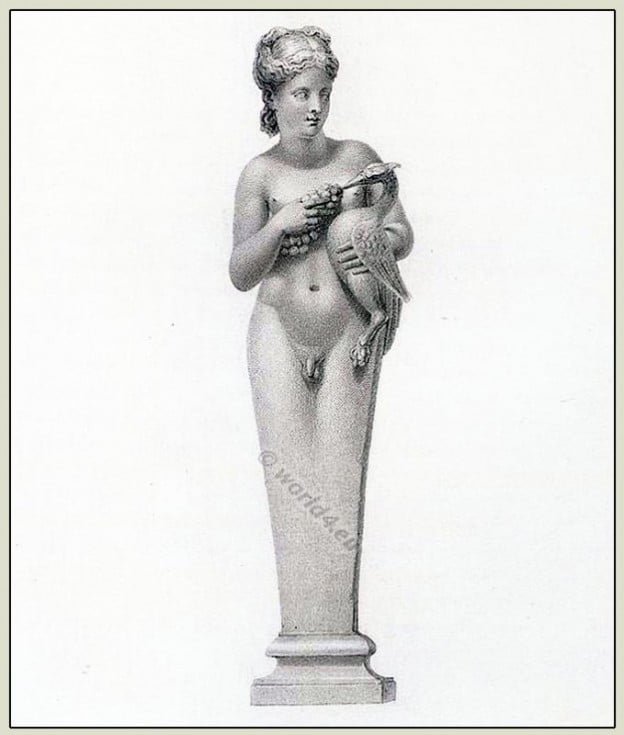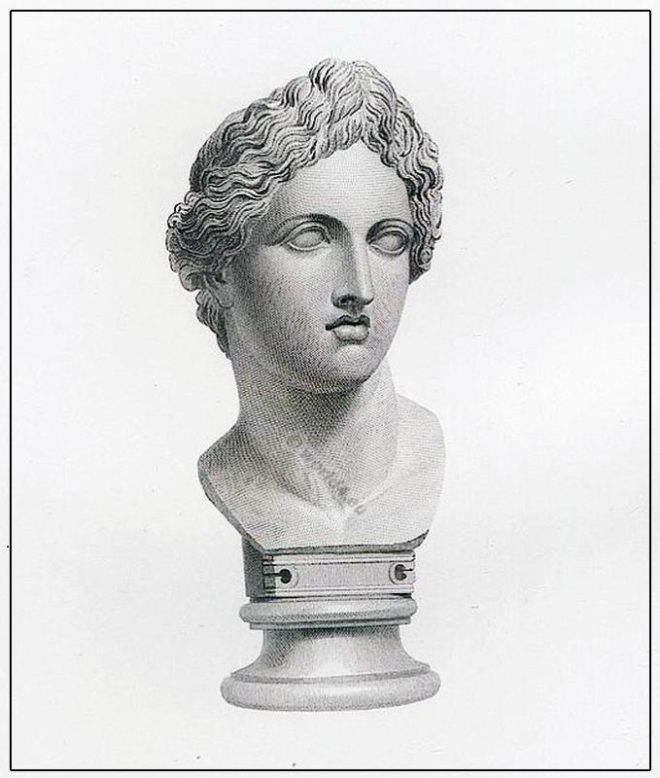A terminal statue of an Hermaphrodite. The human body extends downwards as low as the hips, whence it gradually assumes the form of a square pilaster diminishing in size towards the base.
Category: Ancient Greece
Ancient Greek costume and fashion history. Military, nobility, peasants, decoration, culture
Pan with a human body and the legs of a goat. Follower of Bacchus.
The scholars and writers on antiquities, up to the time of Winckelmann, apply the term Fauns to the human figures with tails and pointed ears, while they term the figures with goat’s legs sometimes Pans, at other times Satyrs.
Statue of Ceres, the Roman goddess of agriculture, fertility and marriage.
A statue of Ceres, crowned in the manner of the Egyptian Isis. This figure is clothed in a very long and ample tunic descending quite to the ground, leaving visible only the extremities of the feet; the sleeves are extremely full, falling down to the elbows, and fastened, along the upper side of the arms, only by fibulae.
Libera, or the female Bacchus in a tunic of fine material.
A statue of Liberia, or the female Bacchus, crowned with a wreath of ivy. A description of the collection of ancient Marbles in the British Museum.
Bust of a young and beardless satyr, with the pointed ears of a goat.
Bust of a young and beardless satyr, distinguished, as usual, by the pointed ears of a goat, and by hair in front shaggy and rough, like that of the same animal.
Female bust of a Bacchante. Maenad of Dionysiac cycle.
This bust has been called that of a Maenad or Bacchante, an attribution which the comparison of other Bacchic types would seem fully to justify.
Asiatic Female with head-dress Cidaris. Persian Phoenician origin.
This bust has been explained as that of Adonis. The head-dress is essentially of Eastern origin, and the cap is analogous to that which is considered peculiar to the Phrygian and Persian races.
Bust of Apollo of great beauty, crowned with a narrow diadem.
The distinguishing characteristic of the head of Apollo is the manner in which the hair is represented.
Head of Minerva with helmet, slightly inclined to the right.
Head of Minerva. The hair, parted in the middle, is drawn back from the temples, after the manner usual in the representations of Minerva.
Minoan. Our Lady Of The Sports.
Minoan costume. Our Lady Of The Sports with male loincloth, Knossos. Chryselephantine Image of Goddess with male Loinclothing: Our Lady Of The Sports Views of Corset, Girdle and male loin… Read More










